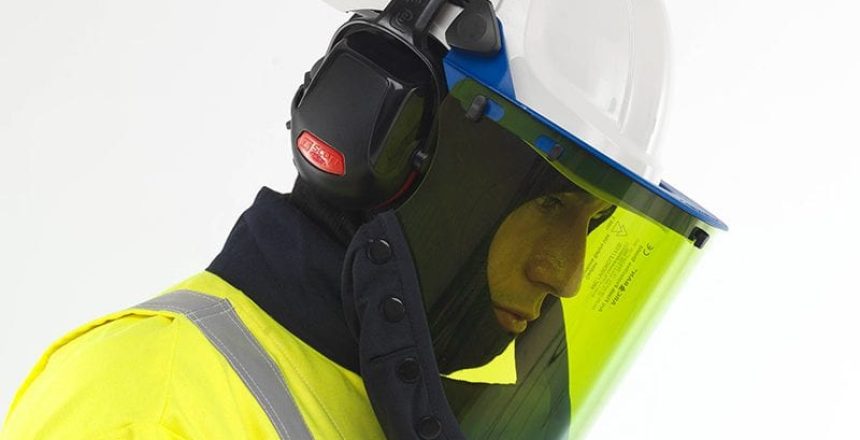The advent of the 18th Edition IET Wiring Regulations (BS 7671:2018) saw the introduction of Arc Fault Detection Devices, to which people quickly recognised that the requirement was a recommendation only which in many cases led to the requirement being largely ignored. As Amendment 2 of BS 7671 came into force this year, that original recommendation changed- in some instances, with it remaining a recommendation in many cases.
As was the case when RCBOs were originally introduced, the cost and the availability of AFDDs has made them all but impossible to source and install on a large scale, a matter that the NICEIC have had to address in a recent article published in The Wire. Before we look at what the NICEIC say, let’s explore what an AFDD is and what BS 7671 requires.
What is an AFDD?
The following is taken from the IET website:
AFDDs are protective devices installed in consumer units to protect from arc faults. They use microprocessor technology to analyse the electricity’s waveform to detect any unusual signatures that signify an arc on the circuit. Cutting off power to the affected circuit could prevent a fire. They are far more sensitive to arcs than conventional circuit protective devices.
https://electrical.theiet.org/courses-resources-career/free-resources/consumer-guidance/arc-fault-detection-devices accessed 13/12/2022
AFDDs are intended to detect minor arcing faults, such as those that can occur in poor or loose connections that result in overheating and fires. To this extent, they offer limited protection during an arc flash incident. AFDDs protect residential areas where more people are sleeping and are typically fitted to socket outlet final circuits.
What does BS 7671 say?
Remember, BS 7671 is a non-statutory document, and the Electricity at Work Regulations 1989 must be complied with. Remember, in many cases, the Building Regulations 2010 and Part P requirements will also need to be met.
Electrical installations that were designed and installed to a previous edition of BS 7671 or the IEE Wiring Regulations can remain in service and need not be brought in line with BS 7671:2018+A2:2022 unless alteration or addition works are undertaken- in which case those alterations and addition should comply with the current version of BS 7671. Departures from BS 7671 are permitted, although this can be risky, and any alternative method of working should provide an equivalent level of protection that the original requirements of BS 7671 intended.
Regulation 421.1.7 states:
Arc Fault Detection Devices (AFDD) conforming to BS EN 62606 shall be provided for single-phase AC final circuits supplying socket outlets with a rated current not exceeding 32 A in:
- Higher Risk Residential Buildings (HRRB)
- House in Multiple Occupation (HMO)
- Purpose-built student accommodation
- Care homes
For all other premises, AFDDs conforming to BS EN 62606 are recommended for single-phase AC final circuits supplying socket outlets not exceeding 32 A.
Where used, AFDDs shall be placed at the origin of the circuit to be protected.
AFDDs do not obviate the need to apply one or more measures provided in other clauses in BS 7671.
Two notes accompany the regulation
High-Risk Residential Buildings are assumed to be residential buildings over 18 m in height or above six storeys, whichever is met first. It is anticipated that in many areas, high-risk residential buildings will be defined in legislation which can be subject to change over time, as well as in risk management procedures adopted by fire and rescue services. Current legislation should be applied.
For busbar systems conforming to BS EN 61439-6 and Powertrack systems to BS EN 61534, the AFDD may be placed at a location other than the origin of the circuit.
Regulation 532.6 states:
Where specified, arc fault detection devices shall be installed:
(i) at the origin of the final circuit to be protected, and
(ii) in AC single-phase circuits not exceeding 230 V.
AFDDs shall comply with BS EN 62606. Coordination of AFDDs with overcurrent protection devices, if necessary, shall take account of the manufacturer’s instructions.
What do the NICEIC say on the matter?
The NICEIC acknowledge that regarding ring final circuits, AFDDs are ineffective at detecting series arcing faults; however, they are effective at detecting parallel arcing faults. This suggests the continued importance of testing the continuity of ring final circuits during periodic inspection and testing, where the integrity of the circuit could have been compromised.
Where AFDDs are required in higher-risk installations, it is recommended that existing installations subjected to periodic inspection and testing have the absence of such devices noted and a classification code of C3 be recorded. Where AFDDs are a recommendation, absences of such devices should be noted, but no classification code recorded.
The NICEIC have taken the stance that where consumer units and distribution boards are being replaced, the customer is advised of the benefits of installing AFDDs. Provided alterations or additions have yet to be included, there is no regulatory requirement for them to be included. It is assumed that this only applies to high-risk environments where AFDDs are mandated.
Closing thoughts
The requirement to install AFDDs relates to new and existing installations where alterations and additions are made. For high-risk areas where people are likely to sleep, the need to provide AFDDs to single-phase socket outlet circuits is mandatory, whilst a recommendation exists in commercial and industrial environments and typical domestic properties.
Even where the current edition of BS 7671 requires AFDDs, the replacement of damaged accessories, such as individual socket-outlets, is unlikely to require the provision of an AFDD as the circuit will be no less safe than when the works commenced. However, if alterations or additions to that circuit are made, the requirement to comply with the current version of BS 7671 will remain.
Currently, there is a need for more availability of AFDDs, and in some cases, the cost of devices and the practicalities of installation make complying with the requirements of BS 7671 difficult. This will require a discussion with the person ordering the work and may result in:
- An agreement being reached to record a departure from BS 7671 on the Electrical Installation Certificate or Minor Electrical Installation Works Certificate, or
- A delay in the start of work until materials can be sourced.
Where AFDDs are recommended, there should be an auditable trail to demonstrate that customers have been consulted on the matter and that their instructions have been captured.
As demand for AFDDs increases, availability should improve and the cost per unit will hopefully reduce significantly.




